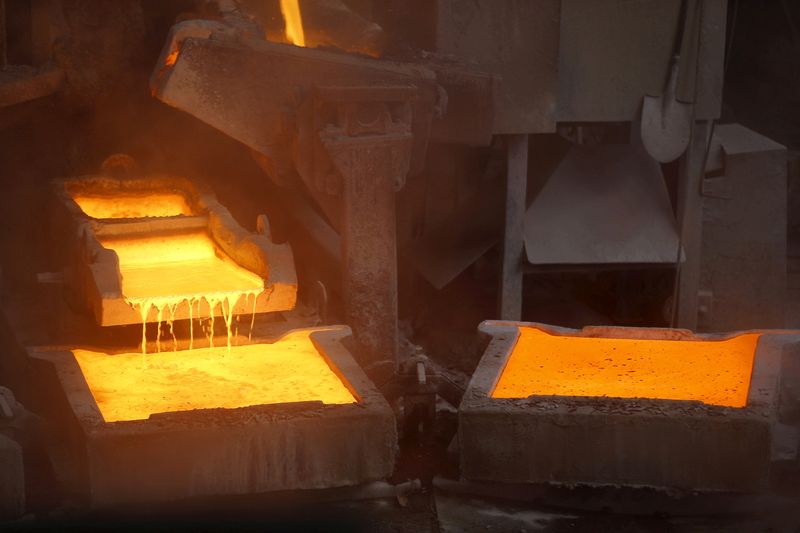SANTIAGO (Reuters) - Global copper producers are converging in Chile this week for their largest gathering since 2019, with talks expected to center on the industry's growing M&A wave amid surging demand and tight supply for the metal anchoring the green energy transition.
The buyout trend comes as Indigenous groups, host communities and others increasingly oppose the industry's attempts to build new mines, obstacles fueling the growing realization among mining companies that they may need to combine in order to grow.
Glencore (LON:GLEN) Plc last month offered $22.5 billion to buy smaller rival Teck Resources (TSX:TECKa) Ltd, an offer that Teck has so far rejected in favor of its own copper-focused growth plans. Lundin Mining (TSX:LUN) Corp is paying nearly $1 billion for control of Chile's Caserones copper mine despite ongoing political uncertainty in the country.
Leaders from all three companies are slated to be among the roughly 450 investors, executives, analysts and regulators gathering in the Chilean capital of Santiago for the annual World Copper Conference.
Registrations are up roughly 8% since 2019 when the conference was last held fully in person. Organizers say they expect the attendance to grow as the week progresses.
"The green transformation theme remains a strong tailwind for copper, the king of green metals," Saxo Bank strategist Ole Hansen told Reuters. "Not least considering how producers face challenges in the years ahead with lower ore grades, rising production costs and lack of investments in recent years."
Global copper demand expected to reach 53 million tonnes annually by 2053 - more than double current levels - but supply is still expected to fall short, according an S&P Global (NYSE:SPGI) study. That projection in part underscores the deal rush.
BHP Group Ltd, the world's largest mining company, last week won shareholder approval for its $6.4 billion takeover of Australian copper producer Oz Minerals Ltd.
Rio Tinto (LON:RIO) Ltd, which faces strong opposition to its Resolution Copper project in Arizona, last December paid $3.3 billion to buy rival Turquoise Hill (TSX:TRQ) and gain direct control over a giant Mongolian copper mine.
And Hudbay Minerals (TSX:HBM) Inc last week said it would pay $439 million for rival Copper Mountain Mining Corp.
Beyond M&A, these mining giants face the creeping problem of attracting new workers, especially in the United States, as well as competition from upstart rivals exploring new ways to extract copper at the bottom of the Pacific Ocean and through leaching of mine waste.
"This is a fairly agile market and it is permanently evaluating its long-term investments," Chilean Mining Minister Marcela Hernando told Reuters.
Hernando, slated to deliver the conference's keynote speech on Tuesday, expects copper output to jump in coming years from her country, the world's top producer, thanks to operations from state-owned Codelco, BHP, Anglo American (LON:AAL) Plc, Freeport-McMoRan Inc, Glencore and Teck.
Neighboring Peru, the world's second-largest copper producer, also expects to boost production this year.
Copper prices touched a seven-week high last Friday despite macroeconomic concerns fueled by uncertain Chinese demand projections and the ongoing war in Ukraine, although they are down nearly 5% from a seven-month high of $9,550.50 reached in January.

"We expect the copper market to remain in deficit as the green transition accelerates," Fitch Solutions said in a recent report to clients.
A portion of the weeklong conference is devoted to research presentations on new applications for the red metal, part of an industry plan to go on the offense against aluminum, a cheaper but less-efficient alternative to conduct electricity.